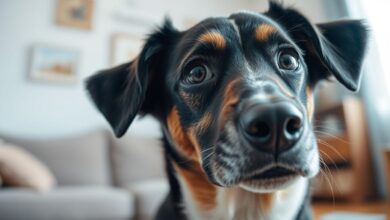How to Stop Your Dog From Peeing Indoors: Effective Tips and Training Techniques

Dealing with a dog that pees indoors can be frustrating, especially if your pet is already house-trained. Whether you’re working with a puppy still learning the ropes or an older dog experiencing new behavioral issues, there are solutions to help you get back on track. Here’s a comprehensive guide on how to stop your dog from peeing indoors and regain control of your home.
Why Is My Dog Peeing Indoors?
Before addressing the problem, it’s essential to understand why your dog might be peeing indoors. Identifying the root cause will help you choose the right approach for fixing the issue. Here are some common reasons:
- Inadequate Training: If your dog is a puppy or wasn’t trained properly as a young dog, they may not fully understand that peeing indoors is unacceptable.
- Medical Issues: Health problems such as urinary tract infections (UTIs), bladder stones, or diabetes can lead to accidents inside the house. If your dog suddenly starts peeing indoors, consult your vet to rule out any medical conditions.
- Behavioral Problems: Anxiety, stress, or fear can cause your dog to urinate in the house. This is often seen when dogs are left alone for long periods (separation anxiety) or in response to environmental changes.
- Marking Territory: Some dogs, especially unneutered males, might mark their territory by peeing indoors. This behavior can happen when they feel their space is being threatened by new people, pets, or changes in routine.
- Age-Related Issues: Older dogs may experience incontinence or cognitive decline, which can lead to indoor peeing.
Effective Ways to Stop Your Dog From Peeing Indoors
1. Start (or Reinforce) Potty Training
If your dog is still learning or seems to have forgotten their house training, it’s time to go back to the basics. Consistency is key in this process. Here are the steps you can take:
- Set a Schedule: Feed your dog at the same time each day and take them outside to pee at regular intervals, such as first thing in the morning, after meals, and before bedtime.
- Reward Good Behavior: When your dog pees outside, give immediate praise, treats, or a favorite toy. Positive reinforcement helps solidify the habit.
- Limit Access Indoors: If your dog frequently pees in certain areas, restrict their access to those rooms by using baby gates or keeping doors closed.
2. Supervise and Confine
Until your dog is fully house-trained, supervision is essential. If you can’t watch your dog, consider using a crate or confined space. Dogs are less likely to pee in their designated sleeping areas, so using a crate can help encourage holding their bladder until they’re let outside.
- Crate Training: Make the crate a comfortable and positive space. Let your dog associate the crate with resting, not punishment.
- Use a Leash Indoors: When your dog is indoors, keep them on a leash to control where they go. This allows you to intervene immediately if they show signs of needing to pee, such as sniffing around or circling.
3. Clean Up Accidents Properly
Dogs tend to pee in the same spot if they can still smell urine. Cleaning up accidents thoroughly is crucial to stop repeat offenses. Use an enzymatic cleaner that breaks down the urine and removes the odor completely. Avoid ammonia-based cleaners, as they smell similar to urine and can confuse your dog.
4. Identify and Address Triggers
If your dog is peeing indoors due to anxiety or territorial marking, identifying and addressing the triggers can help. Common triggers include:
- New People or Pets: Introduce new pets or people to your home slowly to prevent your dog from feeling threatened.
- Separation Anxiety: If your dog pees when left alone, work on gradually desensitizing them to your absence. Start by leaving for short periods and slowly increase the time.
For severe anxiety, consult with a vet or professional dog behaviorist for further training and possibly medication.
5. Use Training Aids
Training aids like indoor dog pads can be used temporarily for dogs that struggle with going outside in time. However, don’t rely on them long-term as they can confuse your dog about where it’s acceptable to pee.
Additionally, bell training is a technique where you teach your dog to ring a bell when they need to go outside. This gives them a clear way to communicate their need, which can reduce indoor accidents.
6. Consider Medical Causes
If your dog is peeing indoors despite consistent training, it’s essential to visit your vet. Urinary tract infections, kidney disease, or other health issues can cause sudden accidents. Your vet may recommend tests to determine if a medical problem is the cause and provide treatment accordingly.
7. Neuter or Spay Your Dog
If your dog is marking territory by peeing indoors, spaying or neutering them can reduce this behavior. While marking isn’t exclusive to unneutered dogs, it’s more common among them. This simple procedure can prevent them from feeling the need to mark their territory inside the house.
8. Increase Outdoor Time
Make sure your dog gets plenty of opportunities to relieve themselves outside. If they’re not spending enough time outdoors, they may not be emptying their bladder fully, leading to accidents indoors. Take them for longer walks and encourage them to pee multiple times before coming inside.
Key Takeaways
Stopping your dog from peeing indoors requires a combination of proper training, addressing potential medical or behavioral issues, and providing them with opportunities to succeed. Be patient and consistent, as house-training is a process that takes time and effort.
With the right approach, your dog can break the habit of indoor peeing and return to their house-trained ways in no time. And remember, always use positive reinforcement to reward good behavior—it’s the most effective way to ensure long-term success!





